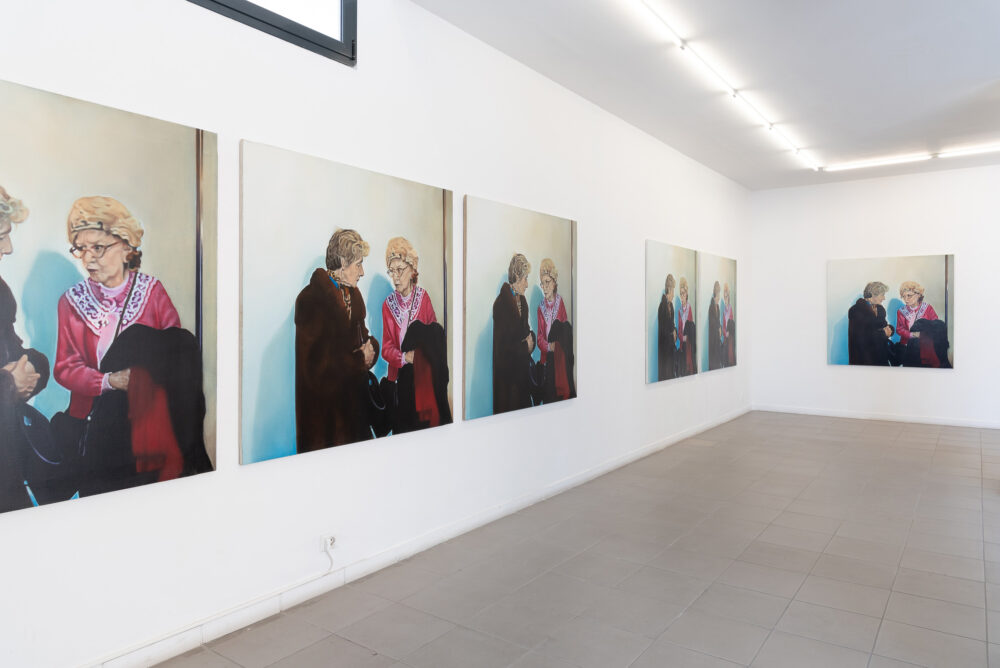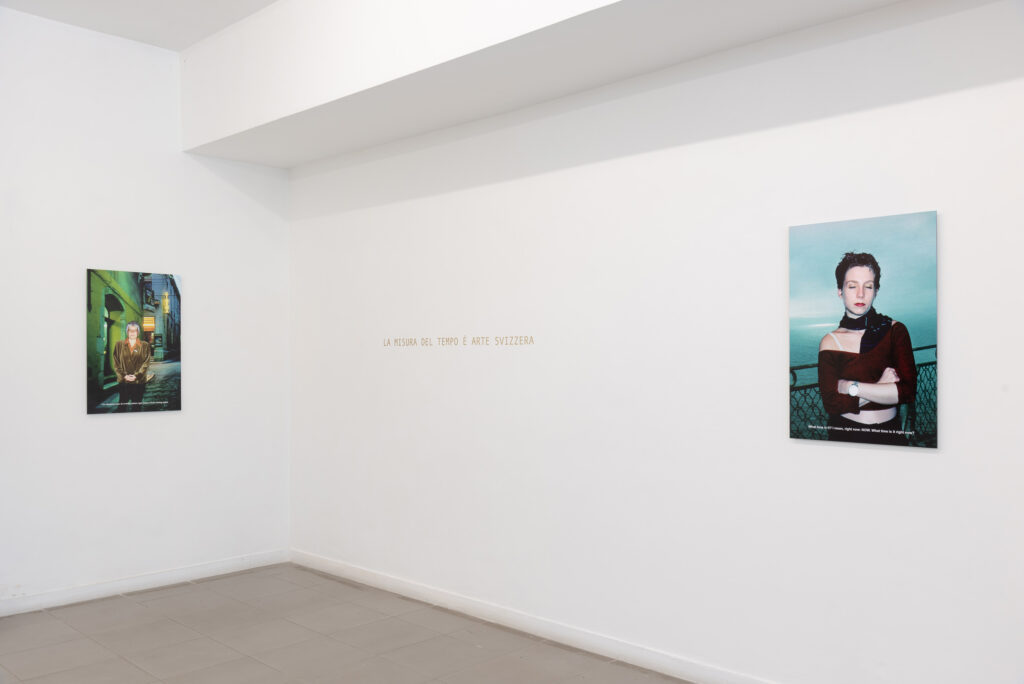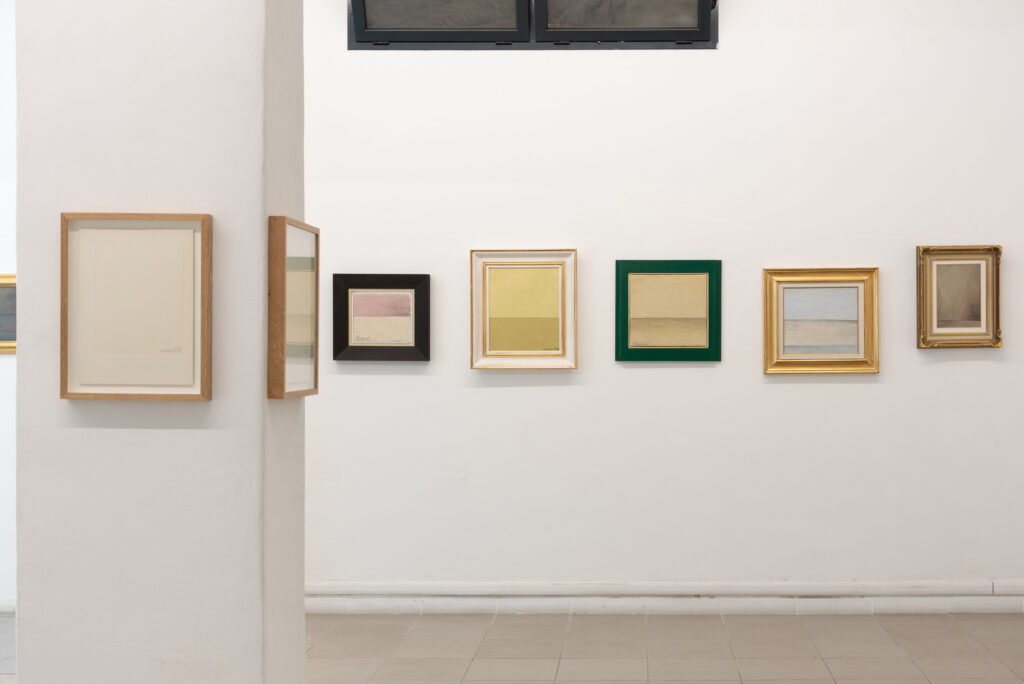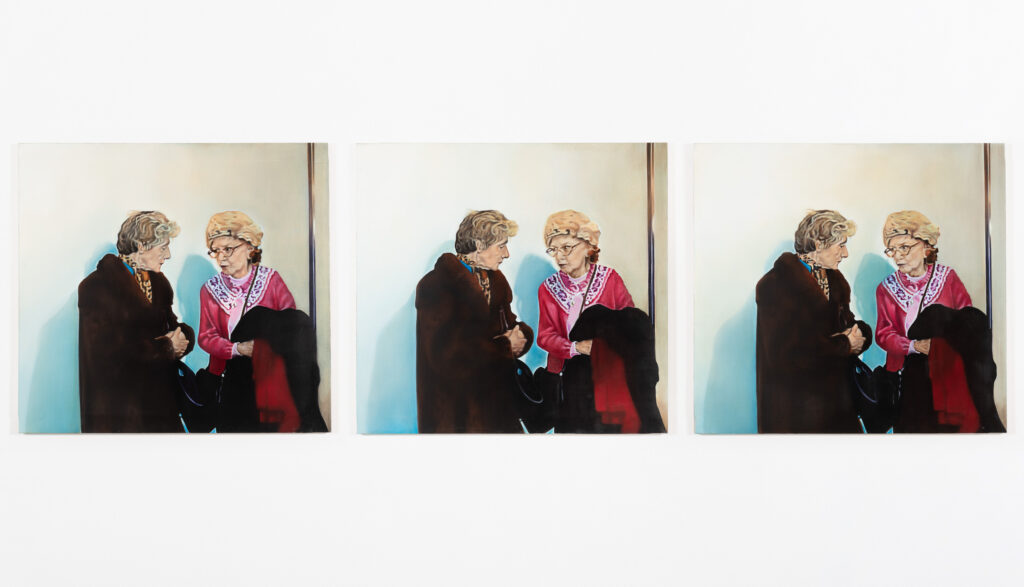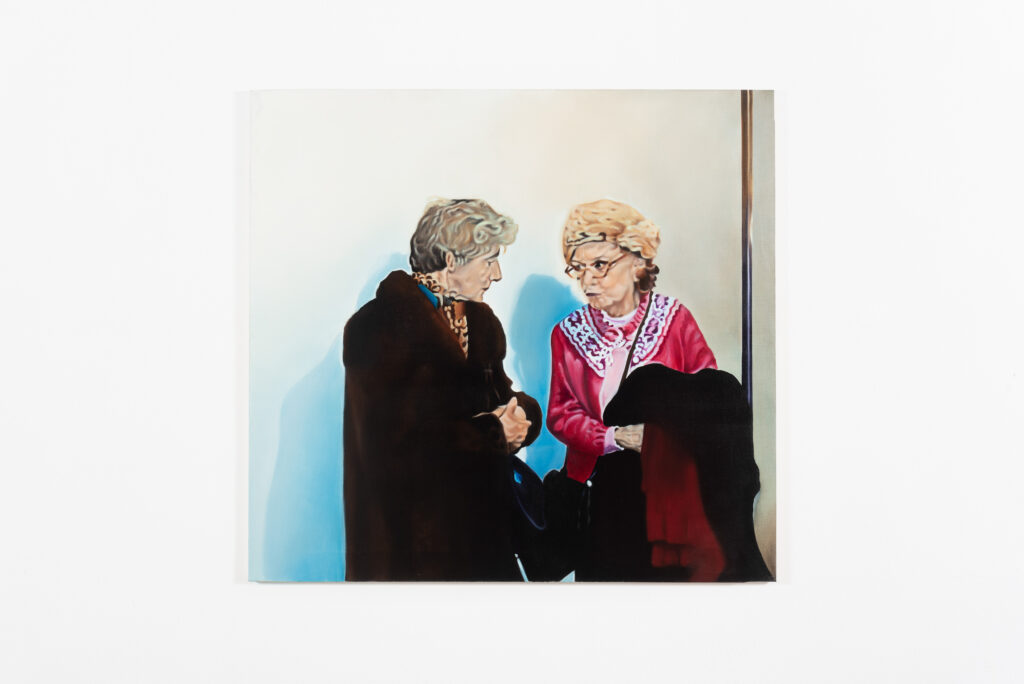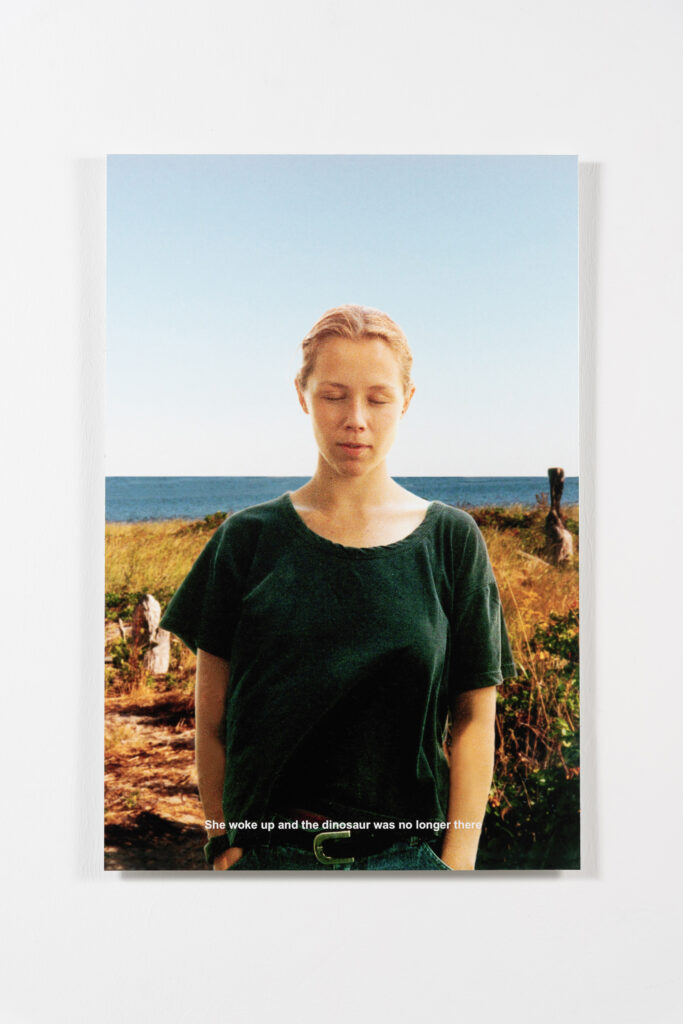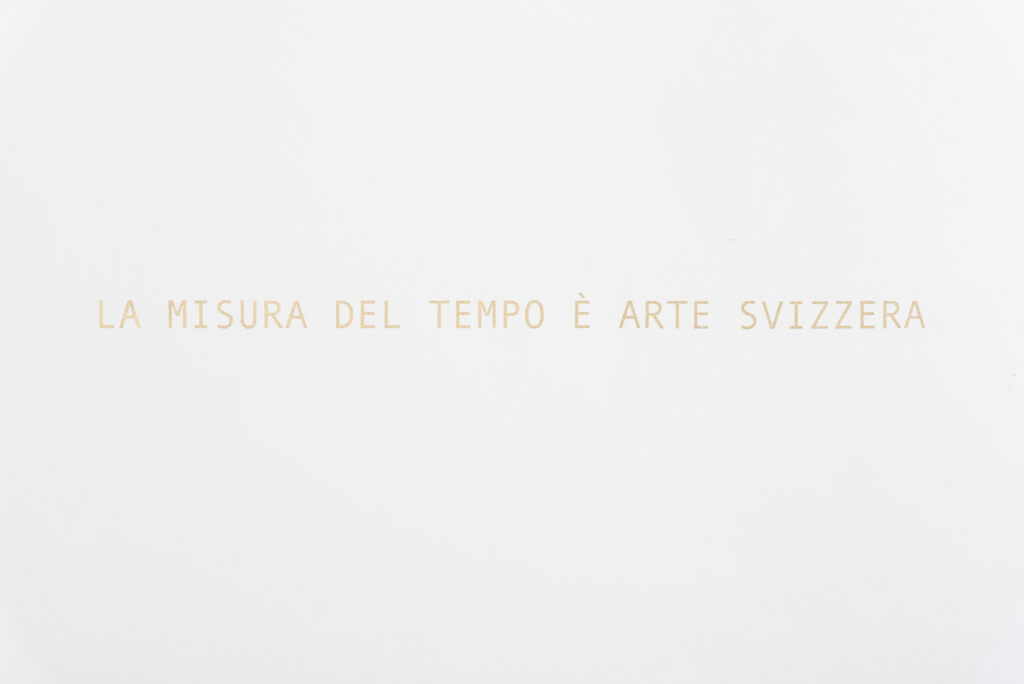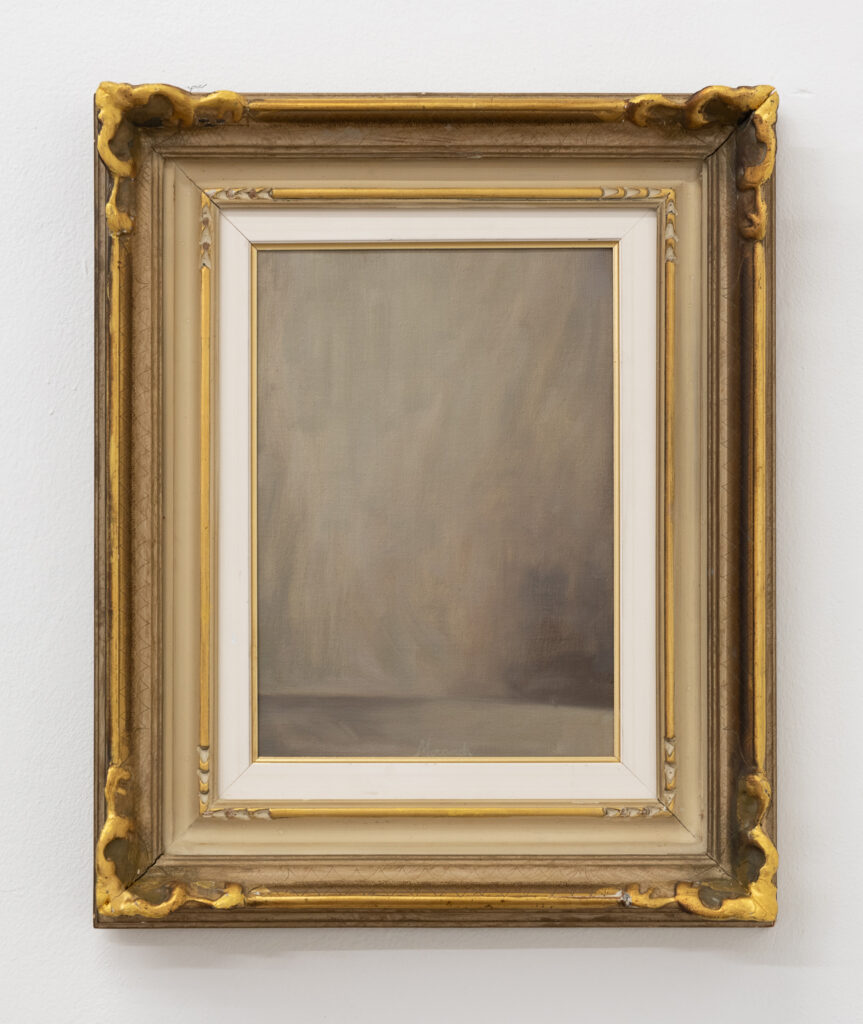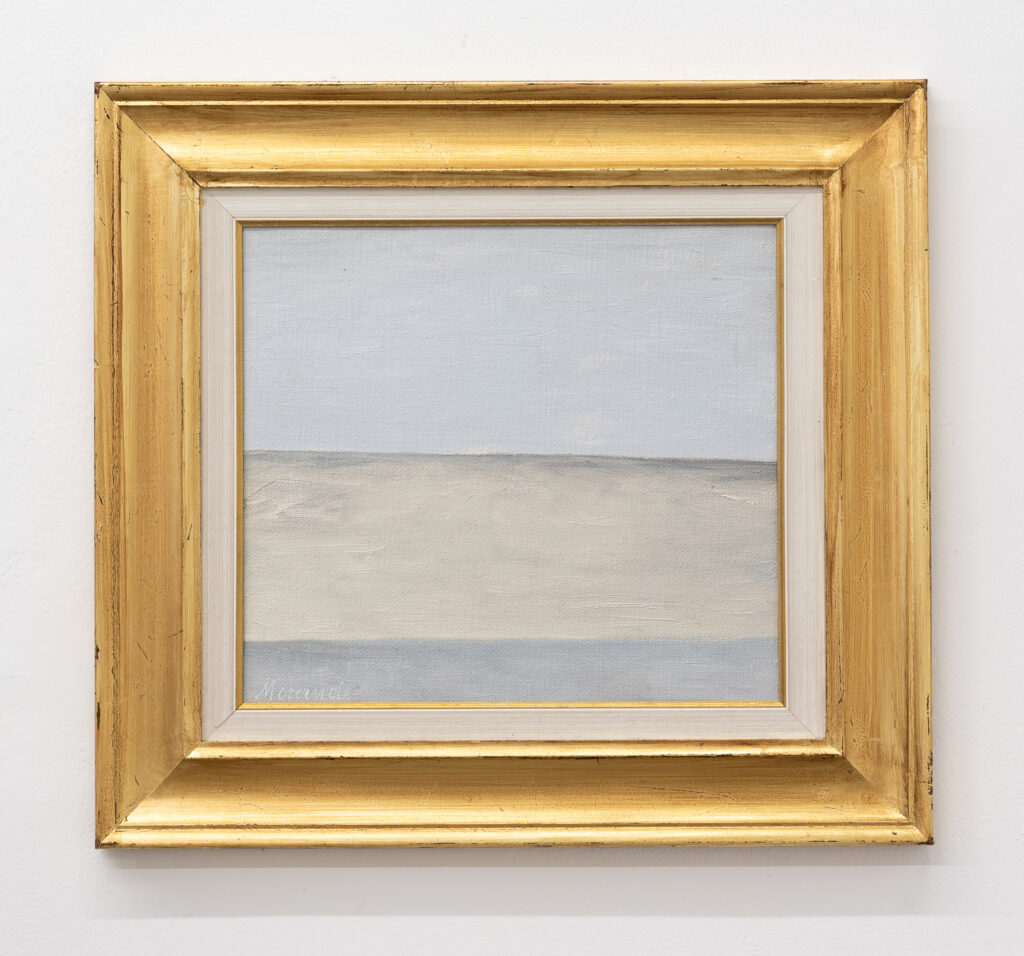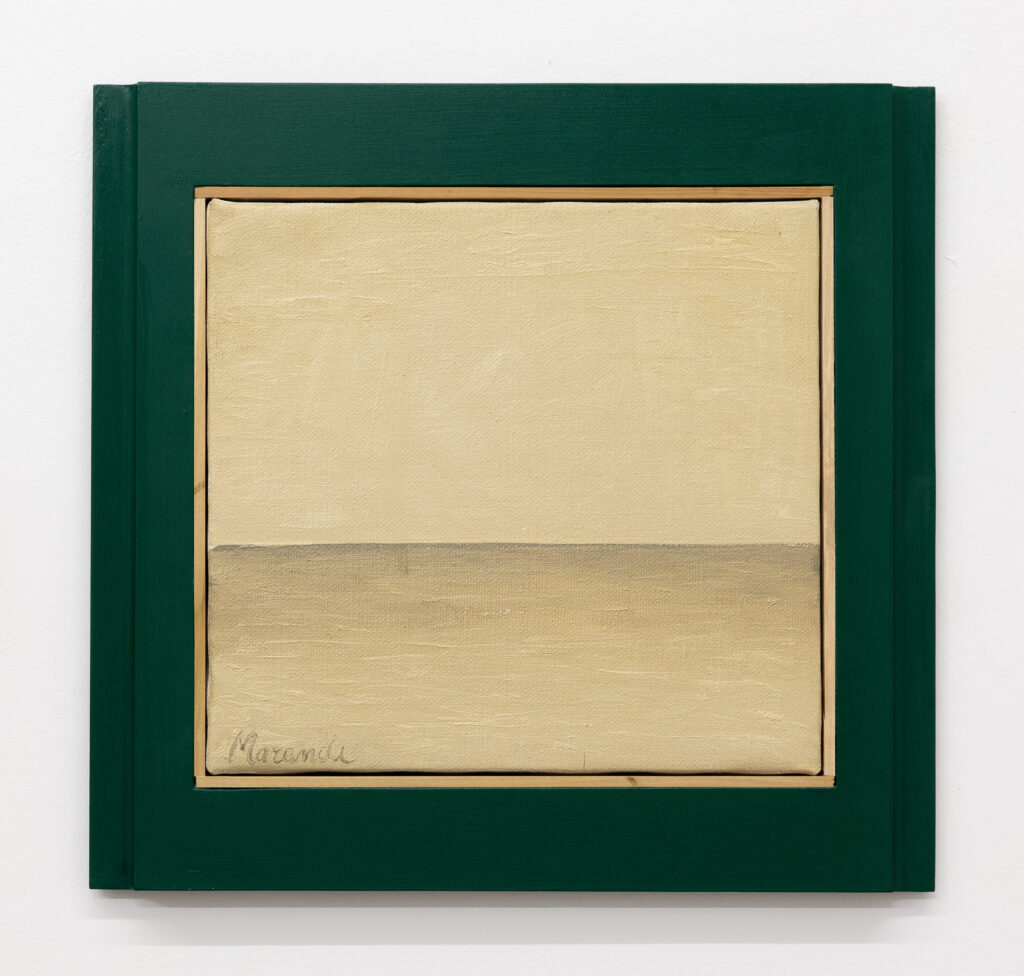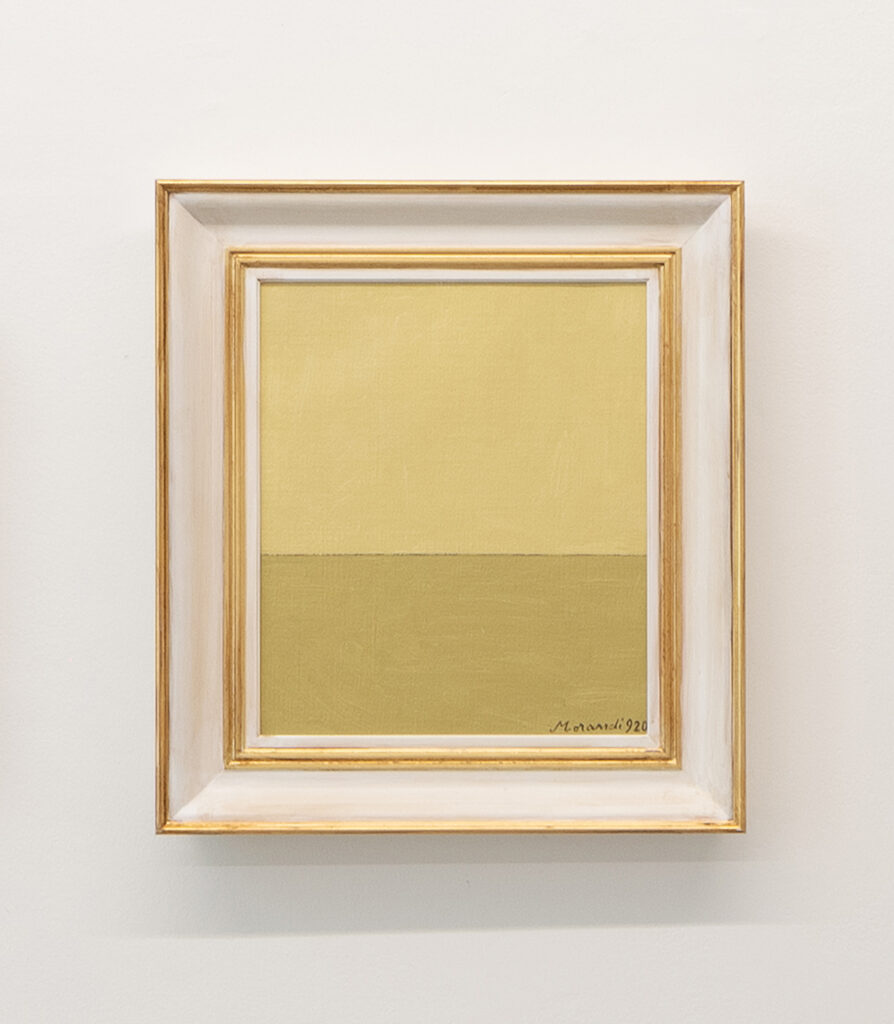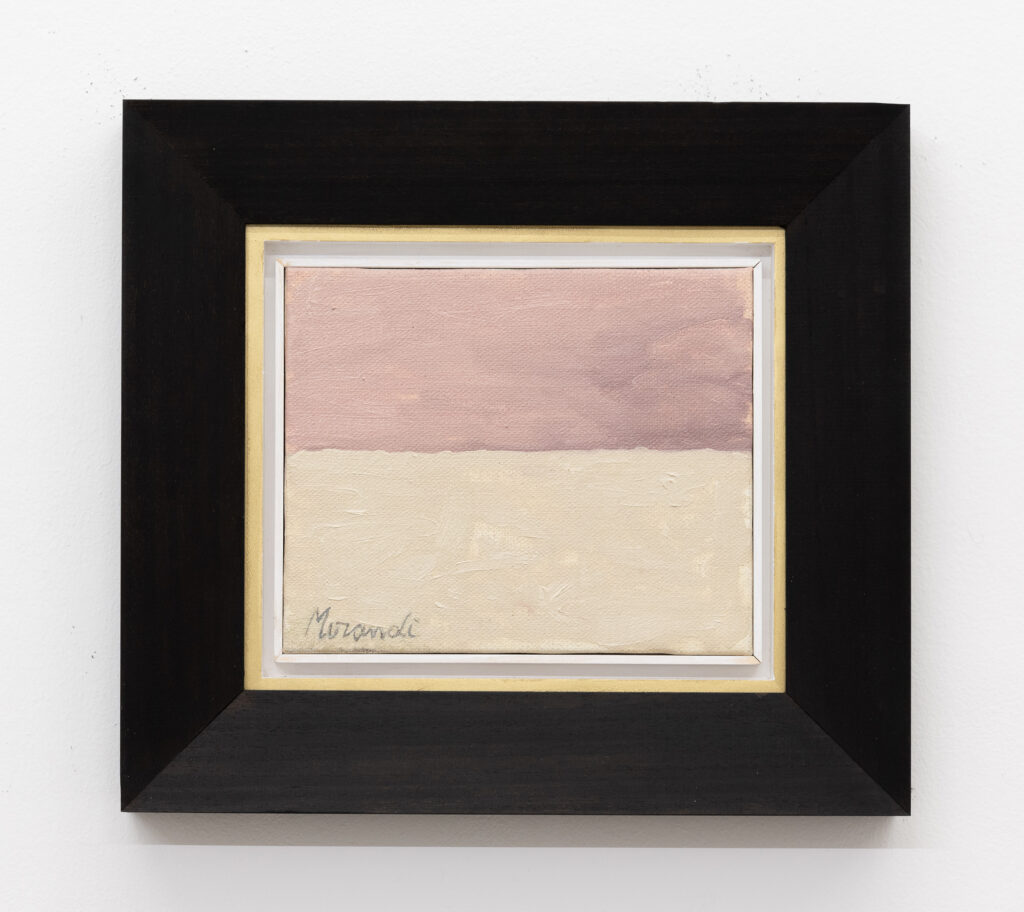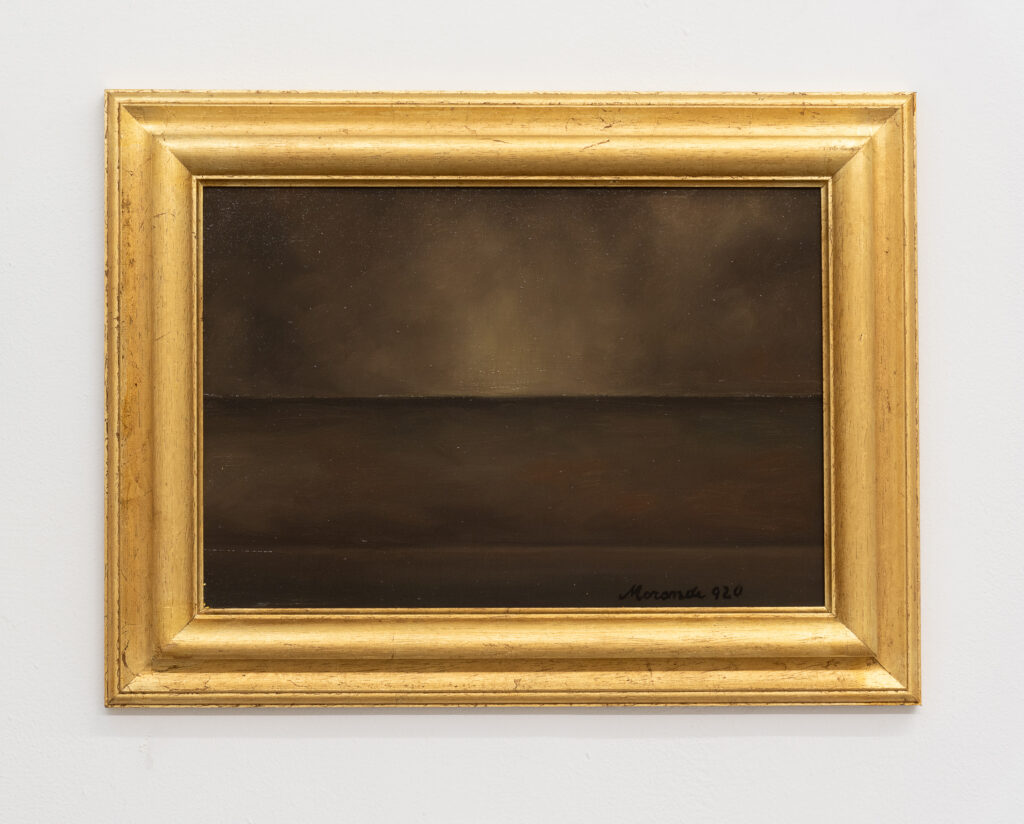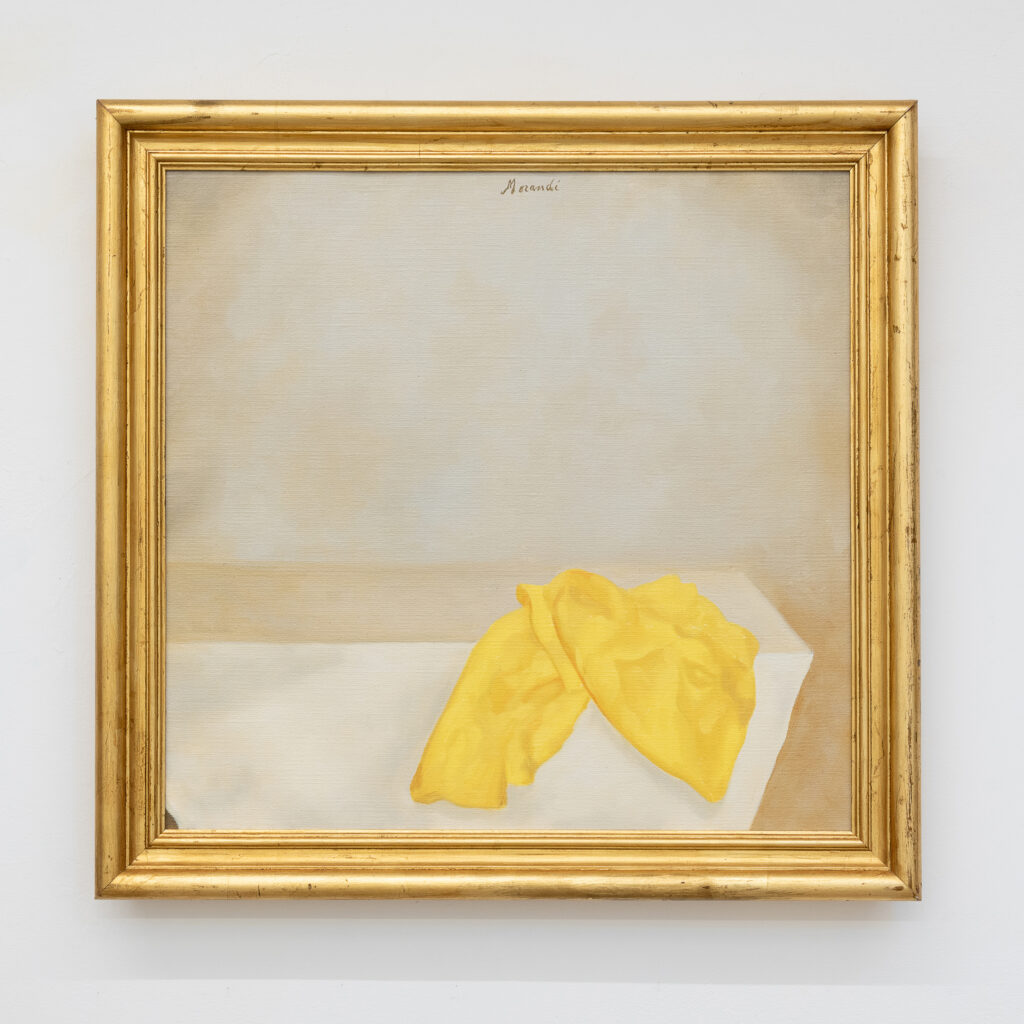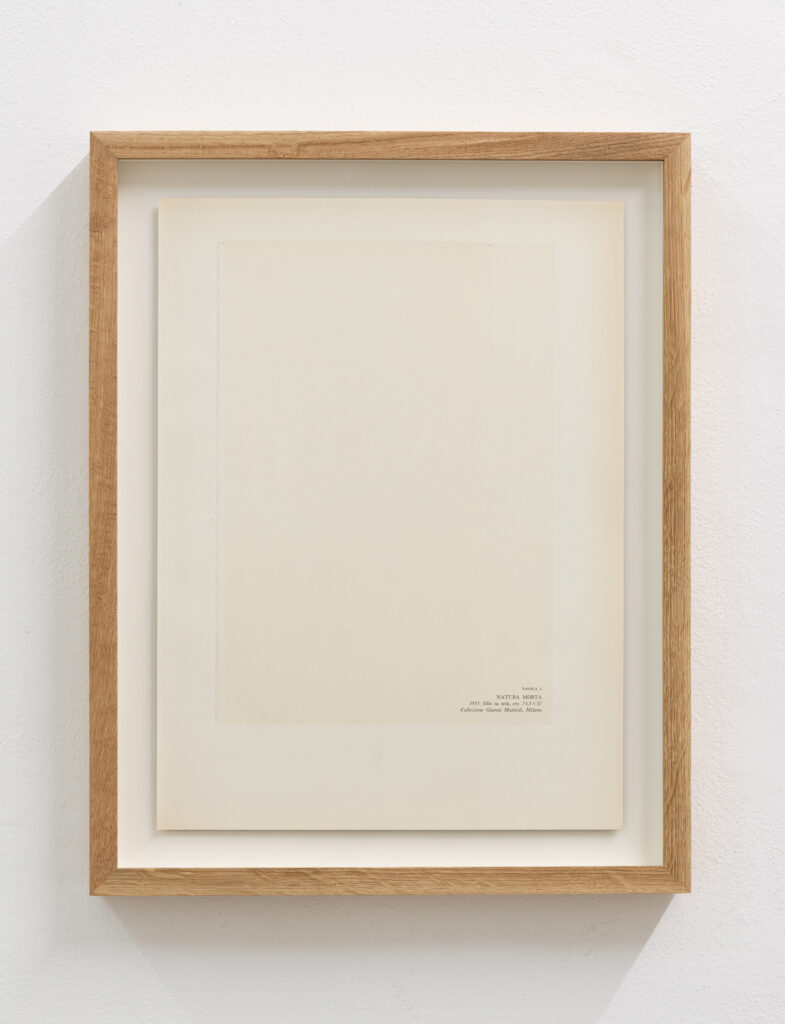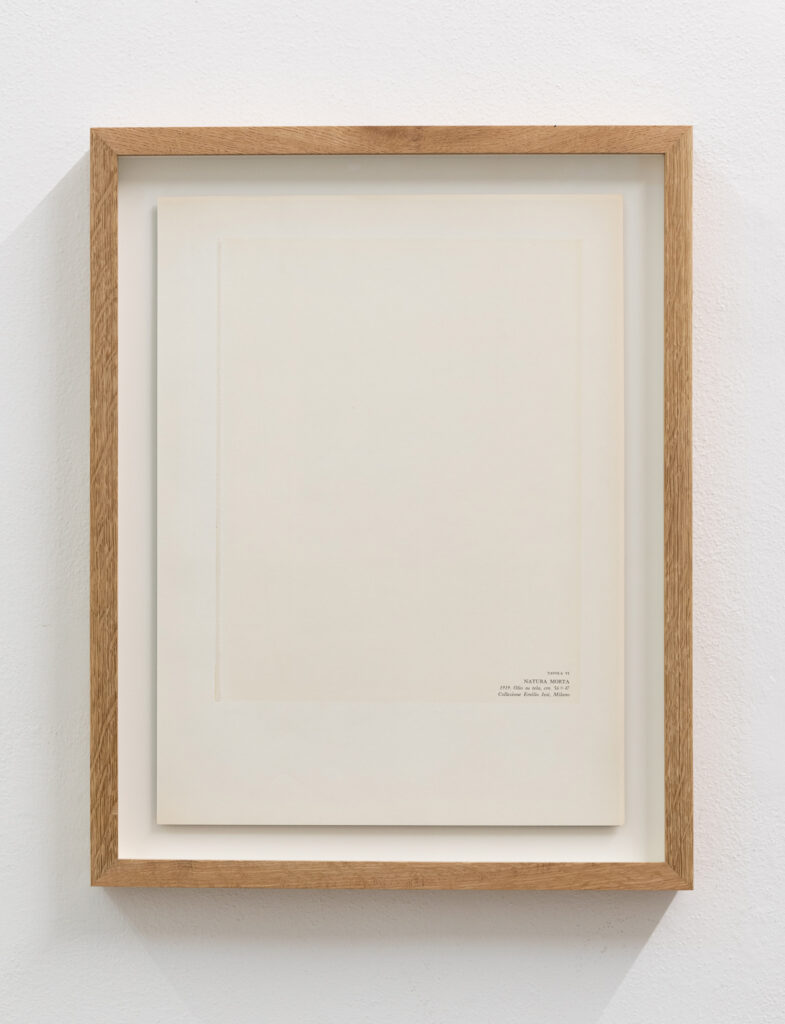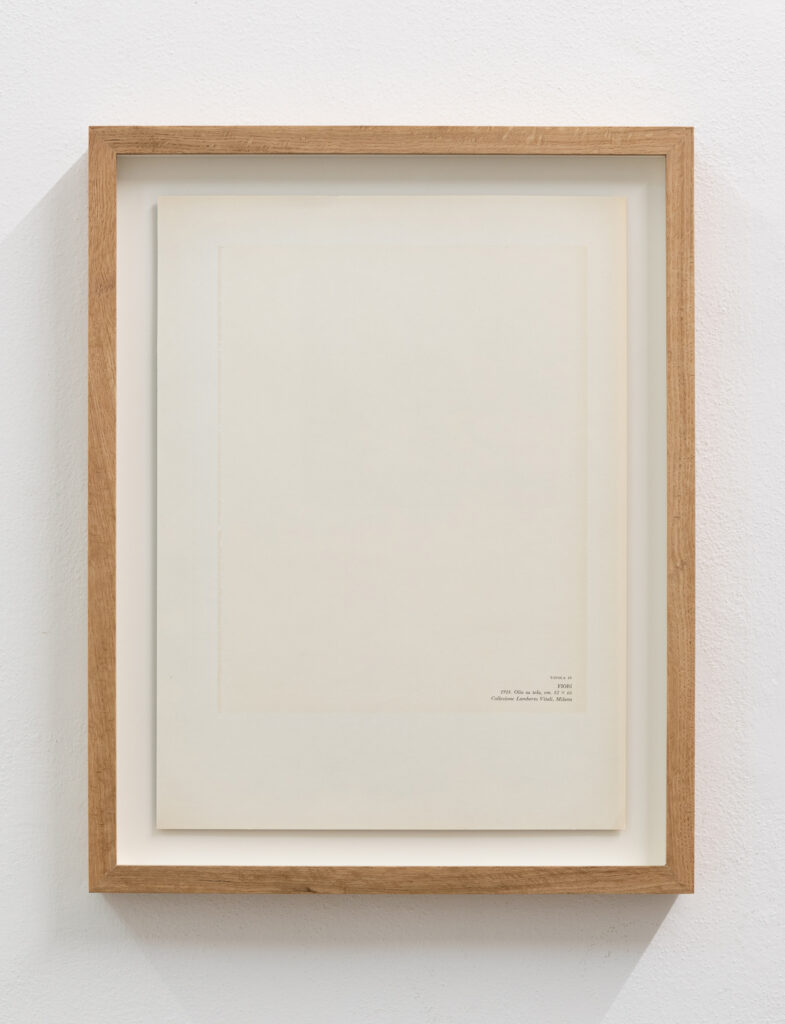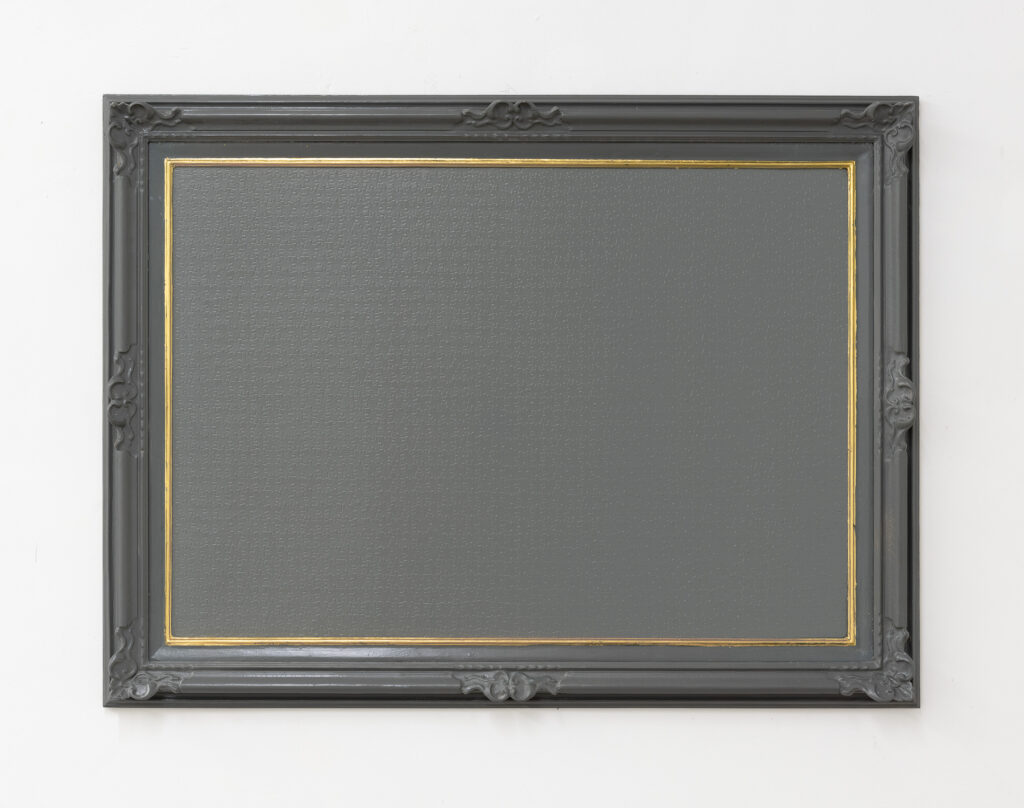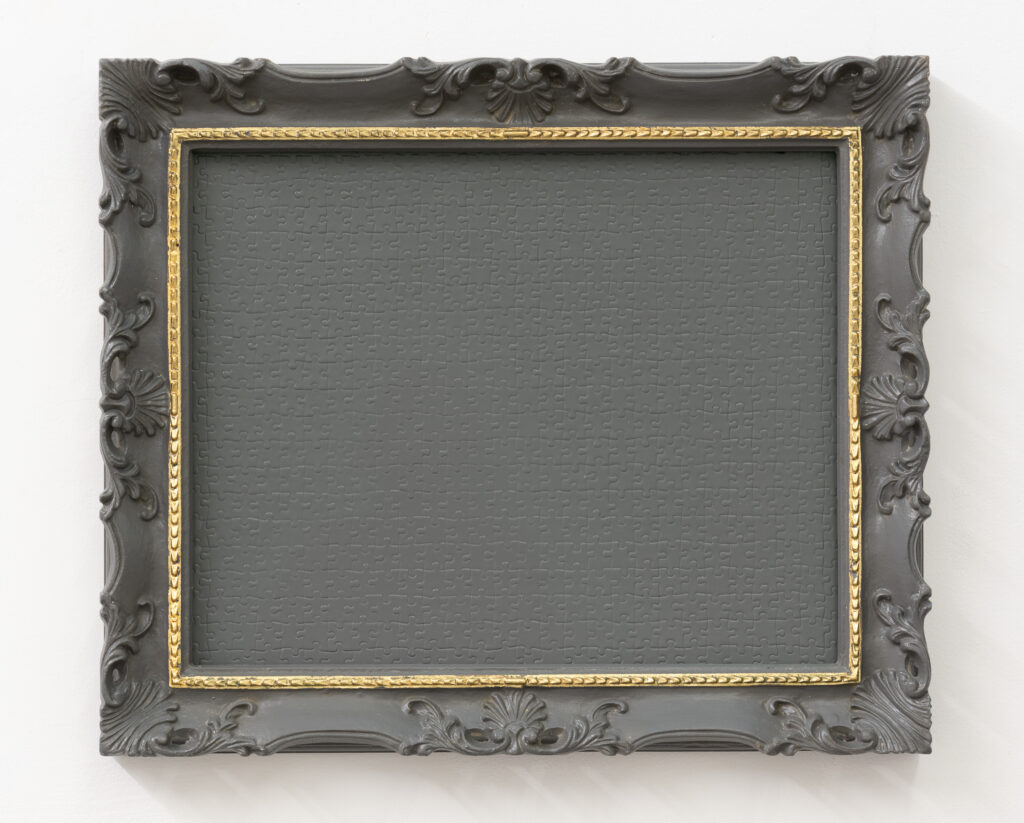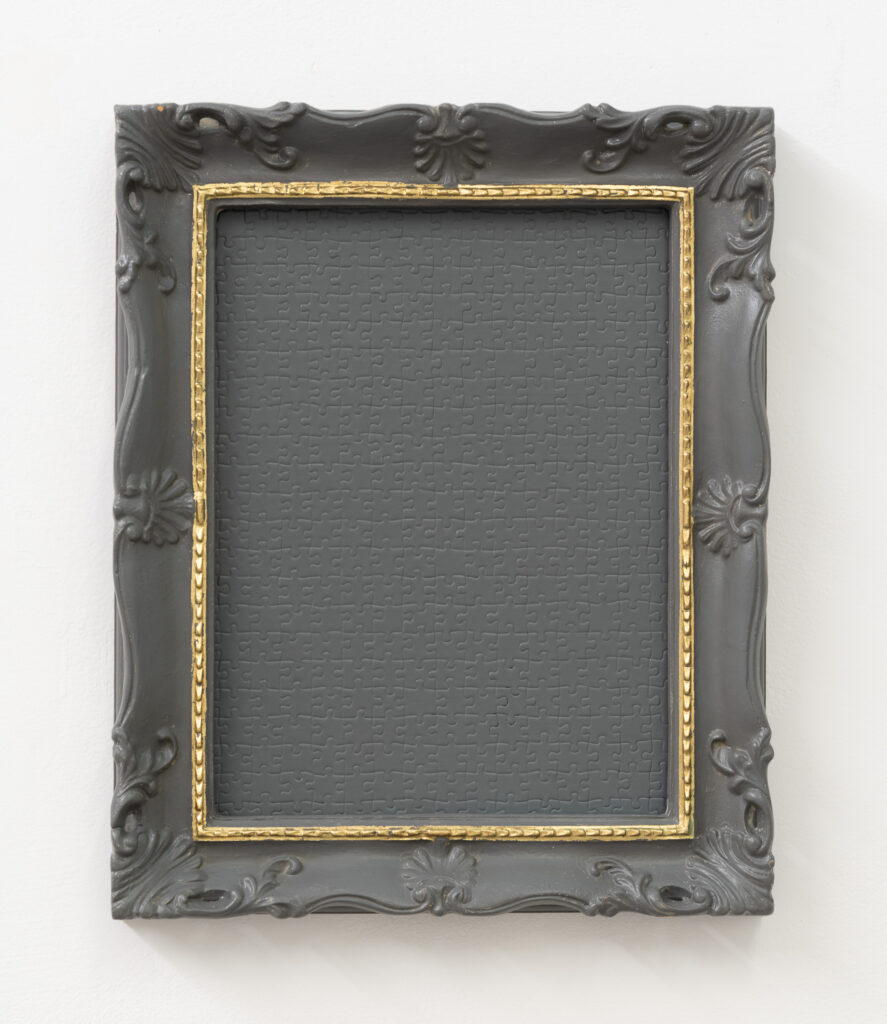GABRIELE DI MATTEO
20.09.2024 – 30.11.2024
Natura morta #3 After Giorgio Morandi, 2024, olio su tela in cornice d’artista, 46,5×51,5 cm (con cornice), foto Eleonora Cerri Pecorella
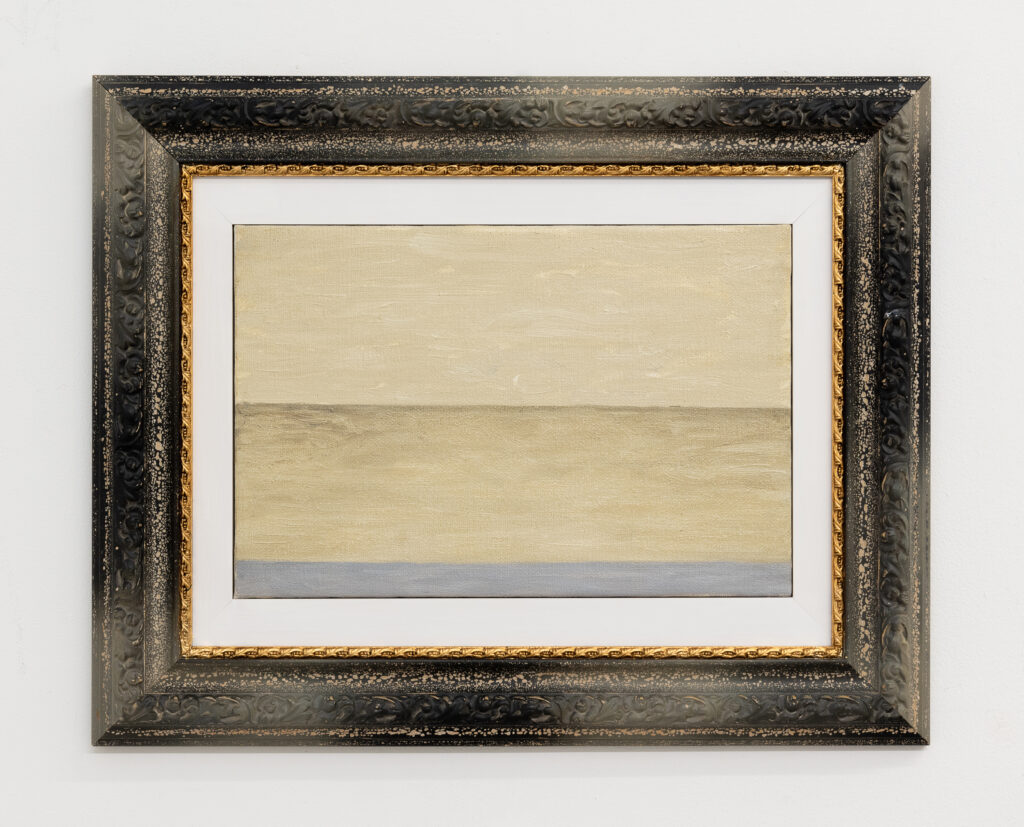
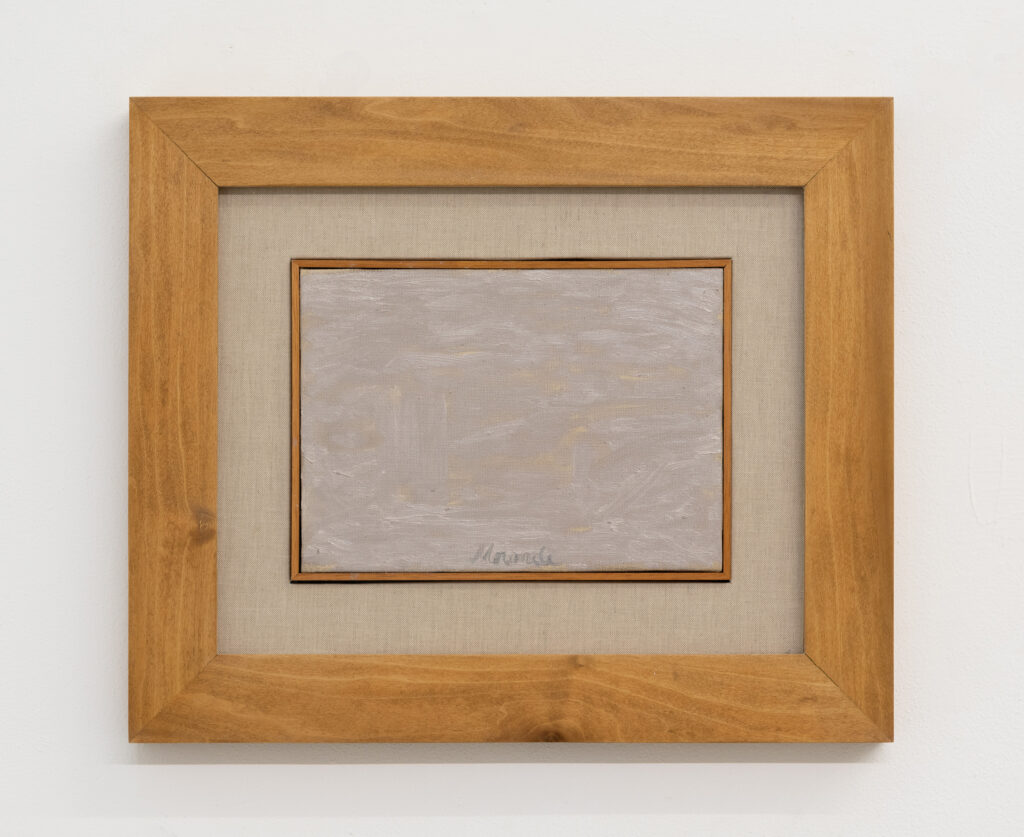

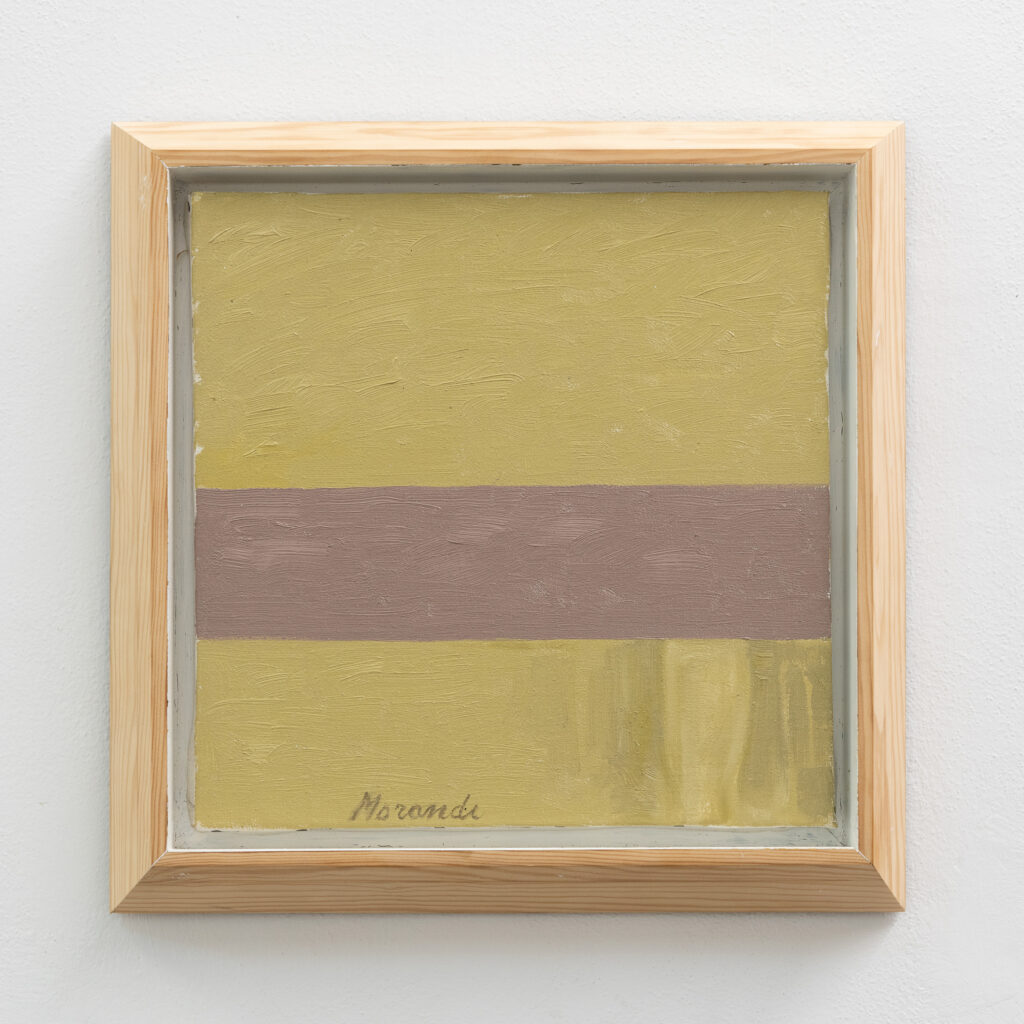
The Gallery Apart is proud to host Gabriele Di Matteo’s solo exhibit, in collaboration with the Wizard Gallery Milano, to celebrate the start of the 2024/25 exhibit season. Featured in leading European public and private art collections, Di Matteo returns to Rome shortly after his noteworthy presence at MAXXI – the National Museum of 21st Century Arts, with the Fuori tutto exhibition held between June 2023 and March 2024.
The Blind Puzzle is the title conceived by the artist, in full continuity with his decades-long research on the theme of the image in all its expressions, from creation to fruition, from its conveyance to the attribution of meaning, and therefore also its absence due to the impossibility or to the unwillingness to see. It is no coincidence that a key role in Di Matteo’s thought and poetics (as well as the subject of his famous series of repeated portraits of the poet) is played by Jorge Luis Borges, who became blind without this preventing him from carrying out his work, thus embodying the figure of the philosopher who yearns for blindness to be able to see with his inner gaze. His first series of works from the Blind Puzzles cycle (2023) feature grey painted tiles that represent an epic effort to reach the final monochrome hue, which recalls the early works in the history of art that marked the transition to the absence of the image.
Art history plays a critical role in the artist’s quest. It has happened in the past, in different ways and with different meanings, with Duchamp, with Pollock and with so many others treated as protagonists of History on a par with great politicians, scientists, writers. For this exhibition too, Di Matteo calls upon a great Italian artist, Giorgio Morandi, whose works he has painstakingly selected and reproduced in all details (from the individual brushstrokes in the background, to the colours, even the frames) except one: the bottles or the vases or the bouquets of flowers that were the subject of the original paintings. Once again, concepts dear to the artist come into play: on the one hand, copy, repetition, reproduction; on the other hand, detournement, displacement, mise en abyme. For Di Matteo, the former are narrative techniques that, by repeating themselves, allow him to assertively state his point of view, without, however, claiming absolute truth as it is painting that will never be identical repetition. The different forms of displacement, on the other hand, allow Di Matteo to relativize the temporal dimension by using images with a strong nostalgic charge that blur the boundaries between past, present and future.
Indeed, the relationship between creation and time is already present in the artist’s painting, as well as in his drive toward reiteration. Despite the incredible technical expertise that characterises the paintings that Di Matteo produced by his own hand, the possibility of copying and reproducing, which led him to recognise as his own the works he commissioned to commercial painters and reproduction artists, confirms the tendency of time to expand dramatically. The inscription (a ready-made from an old watch advertisement) that Di Matteo created on a precious gold leaf: ‘The measurement of time is Swiss art’ is testimony to his deep regard for time.
Two other cycles of works revolve around Blindness: Les visiteuses de Lyon (celles qui ont vu Borges) (1999), repeated portraits of two female visitors to the exhibition of Borges’s portraits in which the writer is depicted with his eyes closed; and two photographs from the series The Blind Man (1998), where Di Matteo photographed some art critics also with their eyes closed, placing them in front of imaginative backgrounds. How does the aspiration for blindness combines with the role of critic? Sergio Risaliti replies: “The critic is like a blind man to whom a clairvoyant has restored life and sight.”* * Sergio Risaliti, Jorge Luis Borges, the blind man librarian, and other considerations on the theme of the clairvoyant and the dark night, in Gabriele Di Matteo, The Blind Man, 1998, Ed. Bibliothèque municipale de Lyon
The Gallery Apart è orgogliosa di annunciare la rappresentanza di Gabriele Di Matteo, in collaborazione con Wizard Gallery Milano, a cui dedica la personale di apertura della stagione 2024/25. Presente in primarie collezioni pubbliche e private europee, Di Matteo torna a Roma a breve distanza dalla significativa presenza al MAXXI – Museo Nazionale del XXI secolo nella mostra Fuori tutto tenutasi tra giugno 2023 e marzo dell’anno successivo.
L’enigma del cieco è il titolo concepito dall’artista, in piena continuità con la sua pluridecennale ricerca intorno al tema dell’immagine in tutte le sue articolazioni, dalla creazione alla fruizione, dalla veicolazione all’attribuzione di senso, e quindi anche alla sua assenza dovuta all’impossibilità o alla non volontà di vedere. Non è un caso che figura di riferimento del pensiero e della poetica di Di Matteo (nonché oggetto di una sua celebre serie di ripetuti ritratti del poeta) è Jorge Luis Borges, divenuto cieco senza che ciò gli impedisse di svolgere appieno la sua attività, così incarnando la figura del filosofo che anela alla cecità per poter vedere con lo sguardo interiore. Ecco allora una prima presenza di opere tratte dal ciclo Blind Puzzles (2023), composti da tessere tutte dipinte di grigio tali da configurare uno sforzo epico di risoluzione per giungere al risultato finale, il monocromo, che richiama precedenti che nella storia dell’arte hanno segnato il passaggio all’assenza dell’immagine.
La storia dell’arte è un ulteriore immancabile ingrediente della ricerca dell’artista. In passato è accaduto, con modalità e significati diversi, con Duchamp, con Pollock e con tanti altri trattati come protagonisti della Storia al pari di grandi uomini politici, scienziati, scrittori. Anche per questa mostra Di Matteo chiama in causa un grande artista italiano, Giorgio Morandi, di cui ha selezionato un nucleo di opere che ha riprodotto in tutti i dettagli (dalle singole pennellate dello sfondo, ai colori, persino alle cornici) tranne uno: le bottiglie o i vasi o i mazzi di fiori oggetto dei dipinti originari. Di nuovo entrano in gioco concetti cari all’artista: da una parte copia, ripetizione, riproduzione; dall’altra detournement, spiazzamento, mise en abyme. I primi sono per Di Matteo delle modalità narrative che, riproponendosi uguali a se stesse, gli consentono di affermare con assertività il suo punto di vista, senza però, trattandosi di pittura che non sarà mai ripetizione identica, avere la pretesa della verità assoluta. Le diverse forme di spiazzamento, invece, consentono a Di Matteo di relativizzare la dimensione temporale, attraverso il ricorso ad immagini dalla forte carica nostalgica che sbiadiscono i confini tra passato, presente e futuro.
D’altronde il rapporto tra creazione e tempo è presente già nella scelta di campo dell’artista a favore della pittura, nonché nella sua pulsione alla reiterazione. Malgrado l’incredibile perizia tecnica che caratterizza i dipinti che Di Matteo realizza di sua mano, la possibilità di copiare e di riprodurre, che lo ha spinto a riconoscere come proprie le opere che commissiona a pittori commerciali e a pittori copisti, attesta l’attitudine del tempo a dilatarsi a dismisura. Della considerazione alta dell’incidere del tempo è testimonianza la scritta (un ready made tratto da una vecchia pubblicità di orologi) che Di Matteo ha voluto realizzare su preziosa foglia d’oro: “La misura del tempo è arte svizzera” (2024).
Alla cecità, vero perno attorno cui ruota l’intera mostra, fanno riferimento altri due cicli di opere: Les visiteuses de Lyon (celles qui ont vu Borges) (1999), ritratti ripetuti di due visitatrici della mostra dedicata ai dipinti-ritratto di Borges in cui lo scrittore è raffigurato con gli occhi chiusi; e due fotografie tratte dalla serie The Blind Man (1998), dove Di Matteo ha fotografato alcuni critici d’arte anch’essi con gli occhi chiusi collocandoli davanti a sfondi immaginifici. Come si coniuga l’aspirazione alla cecità con il ruolo di critico? Risponde Sergio Risaliti: “Il critico è come un cieco a cui un chiaroveggente ha ridato la vita e la vista”*.
* Sergio Risaliti, Jorge Luis Borges, the blind man librarian, and other considerations on the theme of the clairvoyant and the dark night, in Gabriele Di Matteo, The Blind Man, 1998, Ed. Bibliothèque municipale de Lyon
share on
